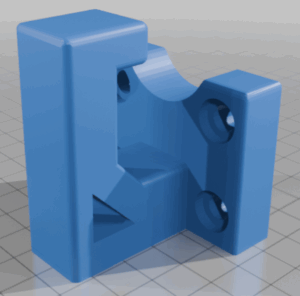As part of GOAT’s collaboration with C.R.I.P.S.R.I.S.E., I’d like to quickly show off their newest 3D printable design, a hook designed to work with the Permobil’s Unitrack mounting system. You can take a look (or print one yourself!) on Thingiverse:
https://www.thingiverse.com/thing:7150714

One of GOAT’s workshop participants asked for this for his chair, and would like to test different styles of hook. There are some printable designs already out there, for example, on yeggi.com: https://www.yeggi.com/q/permobil%20unitrack/
After taking a look at this and other designs, @CriptasticHacker ended up using this model as a base, improving on it, and publishing it with an explanation of his changes.
I was curious to see this printed with a strong nylon or carbon filament, but was persuaded that we should first try this PetG model before amping things up to print in tougher filament that will take many more hours of run time to complete.
We’re looking forward to installing it and giving it a good test!
Leave a Comment


